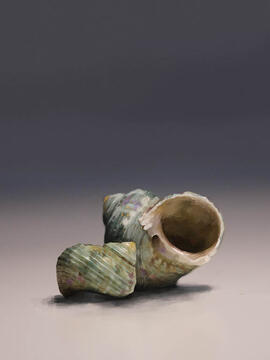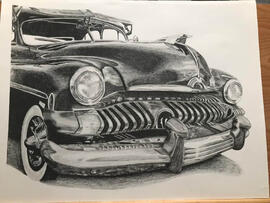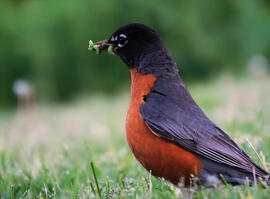The interview documents Woodcock’s blinding at Dieppe in 1942 and his post-war Canadian National Institute for the Blind (CNIB) career. Topics include: rehabilitation at St Dunstan’s and CNIB’s Baker Hall; establishing coast-to-coast CNIB field offices; arranging vocational training and employment for war-blinded veterans; drafting pension-reform briefs that added spousal benefits and continuing allowances; leadership in the Sir Arthur Pearson Association; and shifting rehabilitation from charity to rights-based advocacy.
The interview broadly documents Robert “Bob” Waterhouse’s life and experiences after a spinal cord injury. Topics include: Depression-era childhood and paid work in small-town Ingersoll, Ontario; the June 1939 diving accident and early acute care with skull-traction tongs, immobilisation, pressure-sore treatment, and experimental orthopaedic surgery at Toronto General Hospital; family-led home nursing, bladder and bowel routines, and the role of student nurses during the Second World War; intensive physiotherapy, brace-walking and vocational retraining at Christie Street Hospital and Lyndhurst Lodge (1946-48); post-war community support from Kiwanis and the Canadian Paraplegic Association; adult return to secondary school and completion of a B.Comm. at Queen’s University, highlighting campus accessibility barriers, ad-hoc ramps, and peer assistance; acquisition of bespoke hand-control automobiles and the emergence of independent driving; employment as a YMCA office manager and later as a national employment counsellor for newly injured Canadians; marriage, home adaptations, and shared recreational life (fishing, cottage ownership); evolving public and professional attitudes toward disability, from custodial care to rights-based inclusion; and Waterhouse’s contributions to Ontario Building Code accessibility clauses and broader advocacy for equal education and employment.
Item is a digital painting submitted by Aditya Kalra for the 2023 Pulse and Palette: An Art Contest. The description of the art piece is as follows:
"In her graphic memoir Queen of Snails, Burdock writes, “Underneath the snail’s shell, though, there is a more mutable underbelly of feelings and experiences” (Burdock, 57). Recently, I’ve been fascinated by shell-bearing creatures. In parallel, I’ve also been curious about the idea of a “safe space.” In Burdock’s book, a shell becomes a calcareous casing for a concealed world––both a layer of protection and traversable barrier. The shell bestows upon its insides the purest solitude. As an emblem of safety, I drew two seashells in different positions. Although its spiral chamber can only be partially seen through its opening, we become intimately aware of its hidden space. Frequently, I feel like locking myself in the fetal position and entering an incubated pod of my own arms and legs. As graphic medicine explores the power of experiences, I believe that safety and trust are worthy of discourse and vivid depiction.”
The interview, narrated by Jackie Rodgers (widow of John Rodgers), documents John Rodger’s trajectory after an early-1950s RCMP training injury. Topics include: rehabilitation and peer mentoring at Lyndhurst Lodge; earning a BA at Trinity College while living in residence; career ascent to Senior Underwriting Consultant at Manufacturers Life; service on the company’s medical advisory committee; co-founding Toronto’s Wheel-Trans service and advising accessible-housing projects; and advancing employment and transit as pillars of community integration.
Item is a digital photograph of a drawing by Jada Gibson for the Pulse and Palette: An Art Contest held in 2023. This drawing would claim a tied 2nd place in the contest. The description of the art piece is as follows:
"The inspiration behind this piece was "obsolescence", and I wanted to capture something that, though obsolete, left a mark on the world and influenced life in modern day. Besides being beautiful aesthetically, this old car signifies a forgotten brilliance. We may look at an old car and criticize its lack of simplicity, but without this, modern technology would not be where it is today. Despite its obsolescence today, this old car serves as a reminder that seemingly simple ideas can pave the way for inventions that could change life as we know it.
I was inspired to submit this for the "pulse and palette" contest because innovations in health care stemmed from simple discoveries---as a university student, I believe that I and those around me have the ability to solve the health problems that still plague today's society. By appreciating the obsolete, we can value those who came before us, and pick up where they left off.”
The interview documents Noell from her 1949 diving accident through decades of advocacy. Topics include: skull-traction treatment at Montreal Neurological; tendon-transfer surgery under Dr Jousse; completing BA, BSW, and MSW while navigating inaccessible campuses; careers at Mount Sinai Hospital and Children’s Aid; daily physical barriers in office settings; co-founding the Centre for Independent Living in Toronto (1984); and developing Ontario’s first publicly funded attendant-care program.
Item is a photograph submitted by Nancy (Youyue) He for the Pulse and Palette: An Art Contest held in 2023. The description of the art piece is as follows:
"Stories can be told and passed on in many forms. Written poems, spoken words; flowing water, billowing wind. Nature is one of the most diverse and fascinating vector for carrying stories. On a bright spring day, I ran into this American Robin who was having a mouthful of worms. Were these the first worms he catch in the year? Were these worms for itself to enjoy? Or were they for its loved ones and babies? I do not know, but if you listen closely, you can hear the answer in the wind.”
File consists of audio recordings on cassette, and an edited transcript of an oral history interview conducted by Mary Tremblay with Joanne McLeod on October 13, 1995.
The interview documents McLeod’s 1954 injury and rise as a legal and human-rights leader in New Brunswick. Topics include: inadequate rehabilitation in the 1950s; becoming UNB’s first graduate using a wheelchair (1961); legal studies and government service; executive directorship of the CPA-NB division; curb-cut and accessible-transit campaigns; employment services for injured workers; Charter-era disability rights; 1981 International Year of Disabled Persons; aging with a disability; and architectural barriers.
The interview documents Mildred and Tony's experiences after Tony's 1945 war time injury. Topics include: active-training culture at Deer Lodge Hospital; founding the Manitoba CPA branch; securing wheelchairs and hand-controlled Fords; Tony’s chairmanship of the first disability committee for the National Building Code; volunteer curb-cut surveys in Winnipeg; and creation of 1010 Sinclair transitional housing (1975) that modelled independent living.
The interview documents MacPherson’s capture at Hong Kong (1941) and lifelong advocacy. Topics include: starvation and eye damage in POW camps; struggle for full DVA disability recognition (1945-55); retraining at CNIB’s Baker Hall; careers with Hudson’s Bay Company and liquor-control blending; activism in the Sir Arthur Pearson Association; and pursuit of independent life through accessible transit and family support.


